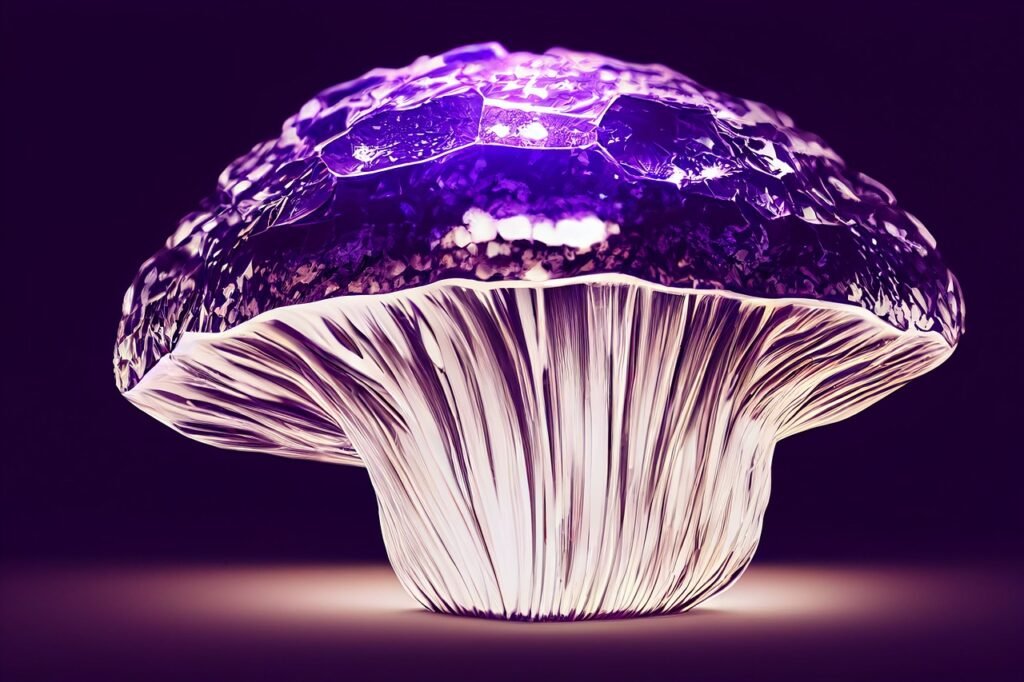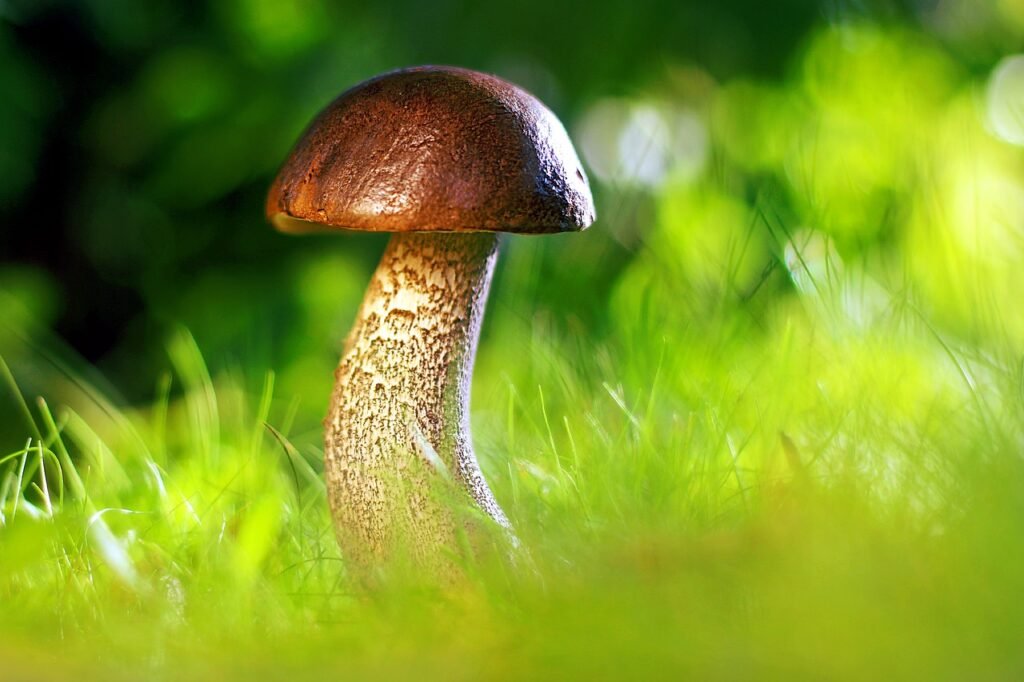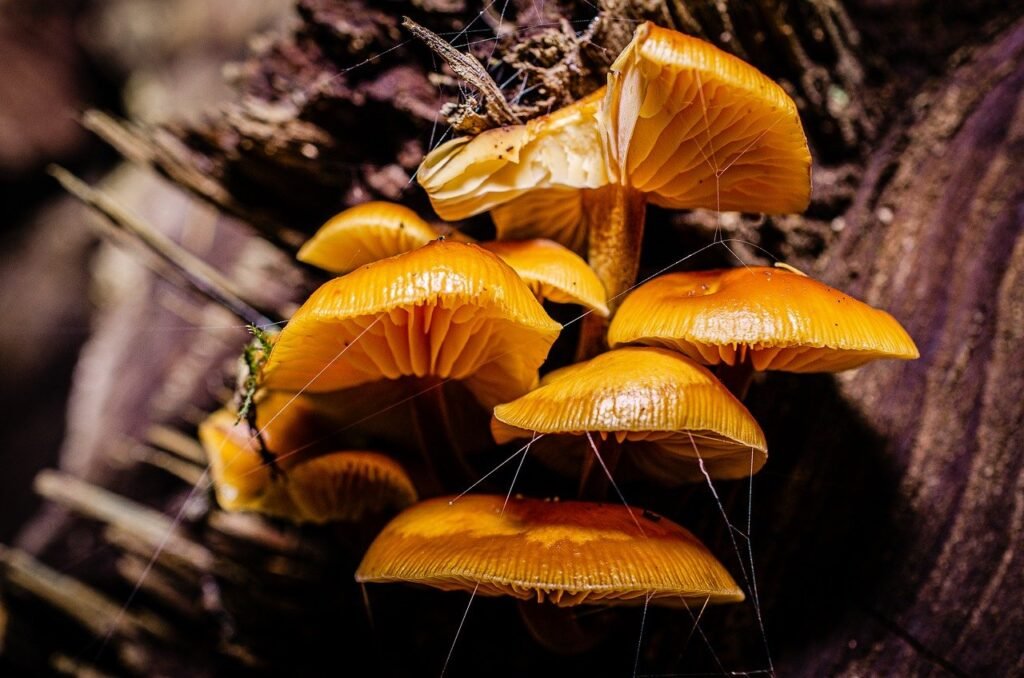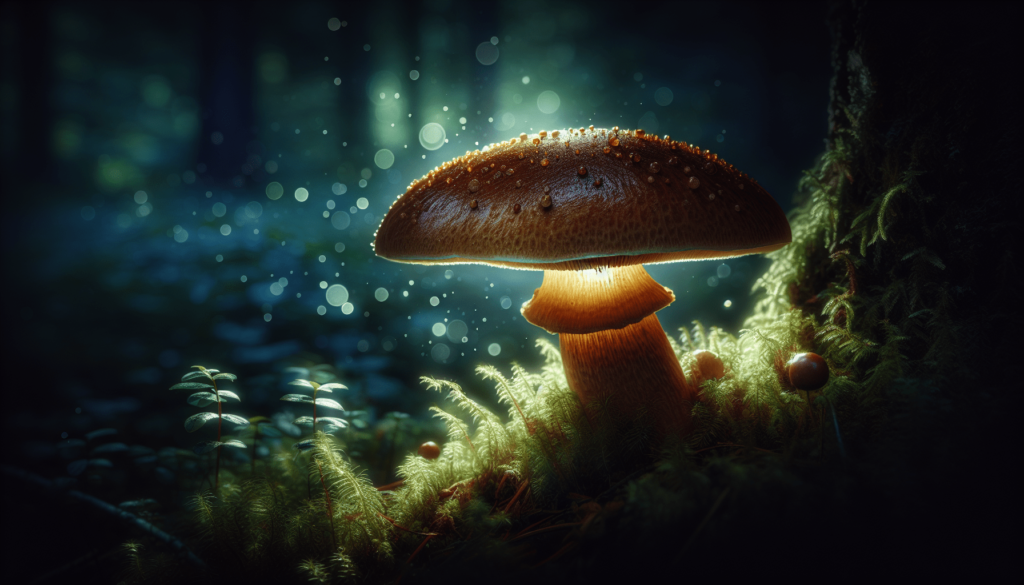So you’re out for a peaceful hike in the woods, enjoying the fresh air and serene surroundings, when suddenly, you stumble upon a beautiful mushroom cluster. Your mind starts to wander as you imagine the delicious mushroom dish you could whip up for dinner. But wait, before you eagerly pluck that mushroom from the ground, you find yourself wondering, “How do I know if a mushroom is poisonous?” In this article, we’ll explore some simple yet crucial tips to help you differentiate between safe and potentially harmful mushrooms, ensuring your foraging adventures end on a savory note.

Physical Characteristics of Mushrooms
Color
Mushrooms come in a wide range of colors, which can provide useful clues when trying to identify them. Some common colors you may encounter include white, brown, yellow, red, and black. Keep in mind that the color of a mushroom can vary depending on its stage of maturity. For example, a mushroom may start off white and gradually change to brown or black as it ages. Therefore, it’s important to consider the overall color as well as any changes that occur over time.
Shape
The shape of a mushroom can also be a distinguishing characteristic. Mushrooms can have various shapes, such as round, conical, bell-shaped, flat, or even irregular. Pay attention to the cap, stem, and overall structure of the mushroom to help with identification. Some mushrooms may have a distinct cap that resembles an umbrella, while others may have a flatter cap or no cap at all. The stem can be tall and slender, short and thick, or even absent in some species.
Size
The size of mushrooms can vary considerably, ranging from minuscule fungi measuring just a few millimeters to large mushrooms that span several inches in diameter. When examining mushrooms, take note of their dimensions, including the cap diameter, stem length, and overall height. Keep in mind that the size of a mushroom can change throughout its growth cycle, so observing multiple specimens at different stages can be helpful for identification purposes.
Growth Habitat and Location
Woodland
Many mushrooms thrive in woodland environments, where they play a crucial role in the decomposition of organic matter. If you come across mushrooms in a wooded area, take note of the types of trees and vegetation present, as this can provide valuable information for identification. Some mushrooms have a specific association with certain tree species, while others may prefer to grow on decaying logs, moss, or leaf litter.
Grassland
Grasslands can also be a suitable habitat for mushrooms, particularly those that prefer open spaces and well-drained soil. Keep an eye out for mushrooms in fields, meadows, or even lawns. These mushrooms may have different characteristics compared to those found in woodland environments. Grassland mushrooms often have a shorter and stockier stem, with a cap that is more prone to cracking or breaking apart.
Urban Areas
Contrary to popular belief, mushrooms can also be found in urban environments. They have a remarkable ability to adapt and thrive in various settings, including parks, gardens, and even sidewalk cracks. When encountering mushrooms in urban areas, it’s essential to consider the surrounding environment. For example, mushrooms growing in close proximity to roads or other potential sources of pollution may be contaminated and should be avoided.
Presence of Warning Signs
Strong Odor
The odor emitted by a mushroom can be a significant clue to its identity. Some mushrooms have a distinct, pleasant aroma, while others may emit a pungent, foul smell. When assessing the odor, take note of its intensity and any specific descriptors that come to mind. However, it’s important to use caution when sniffing mushrooms, as certain toxic species can release harmful compounds into the air.
Slimy Texture
Touching a mushroom can reveal important information about its texture. While some mushrooms have a dry and smooth surface, others may feel slippery or slimy to the touch. The presence of a slimy texture can indicate certain characteristics, such as a higher moisture content or the presence of a slime layer on the cap or stem. This information, combined with other physical characteristics, can help narrow down the potential identification.
Bruising or Discoloration
When handling mushrooms, pay attention to any changes that occur when the tissue is damaged or exposed to air. Some mushrooms may bruise or change color when touched or cut. Bruising can manifest as a change in the mushroom’s appearance, such as a darkening or staining, while discoloration may result in a shift from the original color to a different hue. Not all mushrooms exhibit bruising or discoloration, so this characteristic can vary depending on the species.
Gill or Pore Examination
Spacing and Attachment
Examining the gills or pores of a mushroom can provide crucial insights into its identity. Gills are thin, blade-like structures found on the underside of the cap, while pores are small openings that release spores. Take note of the spacing between the gills or pores, as well as their attachment to the stem. Gills can be close together, crowded, or even distant, while pores may be small or large, and circular or angular.
Color and Texture
The color and texture of the gills or pores can also aid in mushroom identification. Gills may be white, brown, pink, or even various shades of green or blue. Pore surfaces can range from yellow to brown or even black. In addition to color, consider the texture of the gills or pores. Some may be smooth, while others may be ridged, veined, or have a spongy appearance. These details can help differentiate between different mushroom species.

Spore Print Analysis
Collection of Spores
Analyzing the spore print of a mushroom involves collecting the spores it releases. To obtain a spore print, place the cap of a mature mushroom, with the gills or pores facing down, on a piece of paper or glass. Cover it with a container to create a controlled environment and leave it undisturbed for several hours or overnight. The spores will fall onto the surface, creating a visible pattern or color.
Color and Patterns
Once you have collected a spore print, observe its color and patterns. Spores can be white, cream, yellow, pink, brown, or even black. The color of the spores can differ significantly from the mushroom’s cap and gill or pore color. Pay attention to any noticeable patterns or arrangements of the spores, as this can be another useful characteristic for identification purposes.
Check for Special Features
Veil or Ring
Some mushrooms may possess distinct features such as a veil or ring. The veil is a tissue that initially covers the gills or pores, protecting the spores as they develop. As the mushroom matures, the veil may break or dissolve, leaving behind remnants on the stem or cap. A ring, also known as an annulus, is a band-like structure that encircles the stem. These special features can provide valuable clues about the mushroom’s identity.
Volva or Cup
Another special feature to watch out for is the presence of a volva or cup. A volva is a sac-like structure that surrounds the base of the stem, often resembling an eggshell or cup. It can be buried underground or partially exposed above the soil surface. Similarly, a cup refers to a cup-shaped structure that may appear on the cap or stem. These unique characteristics can be helpful in narrowing down the possibilities when identifying mushrooms.
Presence of Annulus
In addition to the ring mentioned earlier, some mushrooms may exhibit an annulus in the form of a collar or skirt-like structure. An annulus can be found at the top of the stem, just below the cap, and can vary in size, shape, and texture. This feature, along with other physical characteristics, can aid in the identification of mushrooms and help differentiate between similar-looking species.

Fungi Identification Resources
Field Guides
Field guides are comprehensive resources that provide detailed information and illustrations of various mushroom species. They often include descriptions of physical characteristics, habitat preferences, and notes on edibility or toxicity. Field guides can be a valuable tool for those interested in learning more about mushrooms and identifying them in the wild. Consider investing in a reputable field guide specific to your region for the most accurate information.
Online Forums
Online forums and communities dedicated to mycology are excellent sources of information and can connect you with experienced mushroom enthusiasts and experts. These platforms provide a space for discussions, photo sharing, and asking questions about mushroom identification. Engaging with knowledgeable individuals can help you broaden your understanding of mushroom characteristics and gain insights into specific species.
Mycology Experts
When in doubt or dealing with potentially toxic mushrooms, seeking advice from mycology experts is essential. These professionals have a deep understanding of mushroom identification and can assist with accurate species determination. Local mycological societies or universities often have mycology experts who offer consultation services or can refer you to the appropriate resources. Consulting with an expert is especially crucial for any mushrooms that you intend to consume.
Edible Mushroom Characteristics
Known Edible Species
There are numerous species of mushrooms that are safely edible and enjoyed as culinary delicacies around the world. Some well-known edible mushrooms include button mushrooms, shiitake mushrooms, oyster mushrooms, chanterelles, and porcini mushrooms. These mushrooms have distinct characteristics that make them easily recognizable and desirable for cooking. However, it is crucial to exercise caution and expert guidance when foraging for wild mushrooms, as many poisonous species closely resemble edible ones.
Edible Mushroom Groups
To help with identification, edible mushrooms are often grouped based on shared characteristics. For example, the Agaricus genus includes common edible species such as the white button mushroom and the cremini mushroom. Similarly, the Pleurotus genus comprises oyster mushrooms, which are valued for their delicate flavor and texture. Grouping edible mushrooms by their characteristics can simplify the identification process and increase confidence in selecting safe options.

Toxic Mushroom Warning Signs
Nausea and Vomiting
One of the most common warning signs of mushroom toxicity is gastrointestinal distress, typically manifesting as nausea and vomiting. Consumption of toxic mushrooms can cause an array of gastrointestinal symptoms, ranging from mild discomfort to severe vomiting episodes. If you experience these symptoms after consuming mushrooms, it is crucial to seek medical attention immediately, as some toxic species can lead to potentially life-threatening complications.
Hallucinations
Certain mushrooms contain psychoactive compounds that can cause hallucinogenic effects when ingested. It is crucial to note that not all mushrooms that induce hallucinations are safe for consumption. Some psychedelic mushrooms, such as the psilocybin-containing species, can be toxic if consumed in excessive amounts or by individuals with specific health conditions. Hallucinations or other changes in perception after consuming mushrooms should be taken seriously and addressed by medical professionals.
Liver or Kidney Damage
Some toxic mushrooms can cause severe damage to the liver or kidneys when ingested. Symptoms may include jaundice, dark urine, abdominal pain, and altered kidney function. If you suspect you have consumed a toxic mushroom or are experiencing any symptoms associated with liver or kidney damage, it is imperative to seek immediate medical attention. Prompt intervention is crucial to minimize potential long-term complications and ensure proper treatment.
Seeking Professional Advice
Consulting a Mycologist
When faced with uncertainty about the identity or safety of a mushroom, consulting a mycologist is highly recommended. Mycologists are experts in the field of fungi and can provide professional guidance in identifying mushrooms and distinguishing between poisonous and edible species. They may be able to analyze photographs, physical specimens, or spore prints to aid in accurate identification. Consulting a mycologist can help ensure your safety and prevent potential adverse effects.
Contacting a Poison Control Center
If you or someone you know has ingested a mushroom that you suspect to be toxic, contacting a poison control center is vital. These centers are staffed by healthcare professionals who specialize in toxicology and can provide immediate assistance and guidance. Describe the symptoms, any available information about the mushroom, and follow their instructions carefully. Do not induce vomiting or administer any other treatments without professional advice.
Remember, when it comes to mushroom identification, it’s always better to err on the side of caution. If you are uncertain about a mushroom’s edibility or safety, it is best to avoid consuming it altogether. Enjoying mushrooms in a culinary context is a delightful experience, but it is essential to prioritize safety and consult experts when needed. With proper knowledge and guidance, you can confidently appreciate the fascinating world of mushrooms while protecting your health.

